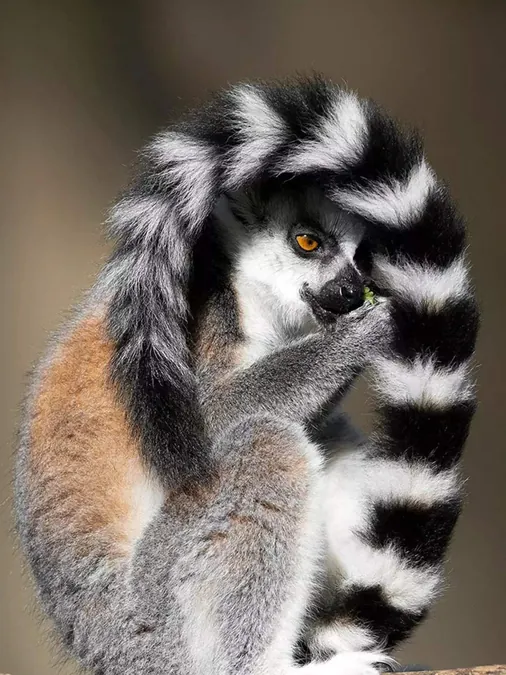
10 Fascinating Animals Exclusively Found in Africa
2024-11-10
Author: Li
10 Fascinating Animals Exclusively Found in Africa
Africa is a treasure trove of unique wildlife, showcasing species that cannot be found anywhere else in the world. From the arid deserts to lush rainforests, each animal has adapted perfectly to its environment, contributing to the continent's rich biodiversity. Let's delve into ten remarkable animals that make Africa truly one of a kind!
1. Aardvark
Meet the aardvark, an extraordinary nocturnal mammal thriving in sub-Saharan Africa. With its distinctly pig-like snout, this master digger burrows deep into the earth in search of ants and termites, using its powerful claws to excavate food. Their remarkable ability to adapt to various habitats makes them an essential part of the ecosystem.
2. Addax Antelope
The addax, a rare antelope endemic to the Sahara Desert, has evolved to endure extreme desert conditions. With their twisted horns and sandy-colored coats, these agile animals blend seamlessly into their environment. Notably, addaxes can go for long stretches without water, making them a true marvel of adaptation.
3. Black Rhino
Known for their distinctive hooked lips, the critically endangered black rhino roams the eastern and southern regions of Africa. These solitary creatures are vital for the ecological health of savannahs, helping maintain plant diversity. Unfortunately, poaching and habitat loss have led to their decline, making conservation efforts critical.
4. Bontebok
Once on the brink of extinction, the bontebok has made a remarkable recovery thanks to conservation measures. This stunning antelope, with its bold black and white coat, can now be found roaming protected areas in South Africa. Their resurgence serves as a hopeful story in wildlife preservation.
5. Fossa
Native to Madagascar, the fossa is a fascinating predator, often mistaken for a cat. As the island's apex predator, it skillfully hunts lemurs and other wildlife among dense rainforests. The fossa's sharp retractable claws allow it to be an agile climber, showcasing the unique adaptations of Madagascar's fauna.
6. Gelada
Only found in the Ethiopian highlands, geladas are captivating social animals and the only grass-eating monkeys in the world. With their striking red chests, they can often be seen foraging in large groups on the rocky landscapes, showcasing a level of social structure that’s as intricate as that of humans.
7. Gerenuk
The gerenuk, or "wrinkled-neck antelope," is easily recognized by its long neck and large eyes. This East African beauty can reach impressive heights by standing on its hind legs to access leaves high on branches. Their unique feeding technique allows them to thrive in arid regions where food can be scarce.
8. Lemur
Endemic to Madagascar, lemurs are a diverse group of primates that vary in size, appearance, and behavior. They play a crucial role in their ecosystems and are known for their playful nature. However, with habitat destruction threatening their existence, lemurs are a symbol of the urgent need for wildlife conservation.
9. Okapi
The elusive okapi, native to the lush rainforests of the Congo, is often described as a living fossil. While resembling a zebra with its striking stripes, the okapi is actually more closely related to the giraffe. Its unique camouflage allows it to blend seamlessly into the forest, protecting it from predators.
10. African Wild Dog
Lastly, we cannot overlook the African wild dog, one of the continent's most successful predators. Known for their distinctively painted coats and pack behavior, these social animals have a strong hunting strategy that allows them to take down prey much larger than themselves. Sadly, they face threats from habitat loss and conflict with humans, making their conservation vital.
Africa's fauna is as diverse as its stunning landscapes, with each species telling a story of adaptation and survival. Protecting these unique animals is essential for maintaining the biodiversity of the continent. If you want to learn more about Africa's wildlife and the importance of conservation efforts, stay tuned for our upcoming articles!


 Brasil (PT)
Brasil (PT)
 Canada (EN)
Canada (EN)
 Chile (ES)
Chile (ES)
 España (ES)
España (ES)
 France (FR)
France (FR)
 Hong Kong (EN)
Hong Kong (EN)
 Italia (IT)
Italia (IT)
 日本 (JA)
日本 (JA)
 Magyarország (HU)
Magyarország (HU)
 Norge (NO)
Norge (NO)
 Polska (PL)
Polska (PL)
 Schweiz (DE)
Schweiz (DE)
 Singapore (EN)
Singapore (EN)
 Sverige (SV)
Sverige (SV)
 Suomi (FI)
Suomi (FI)
 Türkiye (TR)
Türkiye (TR)